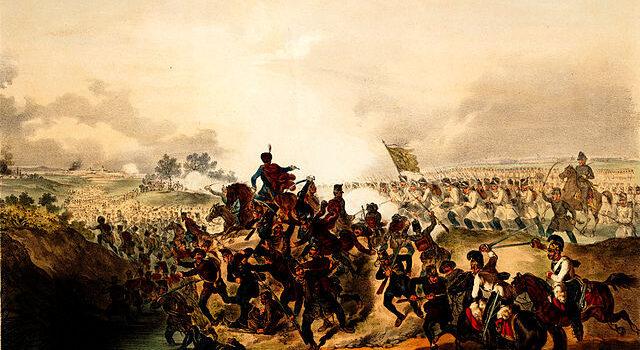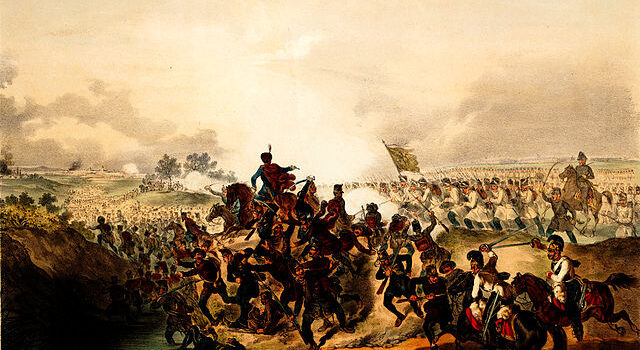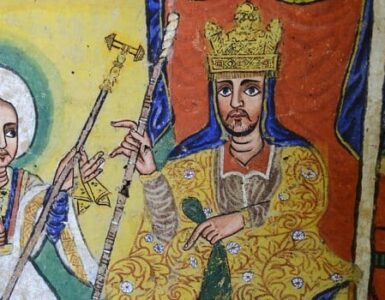The month of October is known for its emphasis on the Holy Rosary, which will be forever associated with the glorious victory of the Holy League at the Battle of Lepanto on October 7, 1571. But while Lepanto occasioned the promulgation of the feast of Our Lady of Victory (the precursor to the current feast day), it is a common misconception that Lepanto was responsible for the universal Feast of Our Lady of the Holy Rosary.
The feast of Our Lady of Victory instituted after Lepanto (1573) was at first reserved to churches which possessed an altar dedicated to the Holy Rosary. In 1671 Clement X extended the observance to the whole of Spain, but it wasn’t until another Christian victory against the Turks in 1716 that the feast was extended to the universal Church. This victory was that of the forces of the Holy Roman Empire under Prince Eugene of Savoy against the Turks in the Hungarian campaign of 1716. The campaigns of Prince Eugene are much less known than the victory of Lepanto, which is a shame as they were of even greater consequence. Let us set the stage by revisiting Europe at the turn of the 18th century.
In 1683, the great Polish ruler Jan Sobieski dealt the Turks a crushing defeat at the Siege of Vienna. That victory had eventually led to the Treaty of Karlowitz (1699), in which the Turks ceded Croatia, Slavonia and large parts of Hungary to the Hapsburgs. Though they still retained the provinces of Temesvar, Moldavia and Wallachia, the arrangement was humiliating to the Turks and no sooner was the ink on the treaty dry than they sought to reform their forces and get revenge on the Holy Roman Empire. Smarting from their wounds, the Turks withdrew east and spent the following generation replenishing their forces.
Their vengeance came in 1716-1718 with the invasion of Austria and the Austro-Turkish War, which arose out of the desire of the Turks to revenge themselves for the losses inflicted upon them by Jan Sobieksi. The Turks were in a fine mood, as this war with Austria came on the heels of successful Turkish campaigns against the Russians (1710-1711) and Venetians (1715). At the beginning of 1716, the Grand Vizier Damat Ali massed an army of 160,000 Turks, Tatars and Janissaries at Belgrade and invaded Hapsburg territory.
This Turkish aggression roused the Austrians to defense. The Hapsburg Prince Eugene of Savoy—who would become the Catholic hero of the early 18th century—was dispatched with an army of 91,000 Austrians, Hungarians, Serbians, and Croats to defend Christendom and chasten the Turks.
The decisive engagement of the war happened early on, at the Battle of Petrovaradin on August 5. Despite being encircled inside a fortress, Prince Eugene managed to outflank the attackers with a broader circle of cavalry, trapping the Turks between the walls of the fortress and the encircling cavalry. The Turks were utterly annihilated; only 50,000 returned alive to Constantinople. The Sultan ordered the execution of Grand Vizier Damat Ali, but the decree was unnecessary—he was already slain in the battle.
After this stunning and unexpected victory, Prince Eugene pressed on into Timişoara (Temeswar), which is a province then in Turkish-occupied Hungary. In a sweeping series of conquests that lasted from August to October 1716, Eugene gloriously swept away the Turkish forces as city after city returned to Christian control after centuries of Turkish oppression. In the first week of October 1716, the fortress of Temeswar capitulated, completing the liberation of Hungary. The conquest of Temeswar fell during the week of October 7-11th, drawing obvious comparisons to the victory at Lepanto one hundred fifty years earlier.
It was in light of this swift and stunning rollback of Turkish power in Europe that Pope Clement XI raised the Feast of Our Lady of Victory to be celebrated by the Church Universal under the title “Our Lady of the Holy Rosary.” Leo XIII would raise the feast to the rank of double of the second class.
As for Prince Eugene, he would go on to even more stunning victories, winning another near miraculous triumph against overwhelmingly superior Turkish forces at Belgrade in 1717, bringing a final defeat to the Turks in the Balkans. By the terms of the Treaty of Passarowitz, signed on 21 July 1718, the Turks surrendered the Banat of Temeswar, along with Belgrade and most of Serbia. Turkish power in the Balkans was broken forever, and from 1718 onward the Turks would only grow weaker at the expense of the growing European powers.
So, while we commemorate the great victory at Lepanto every year at this time, let us also recall the glorious victories of the Catholic Prince Eugene of Savoy in the Austro-Turkish War of 1716-1718, which were the culmination and flowering of the first victory gained at Lepanto a century and a half earlier.
Image: Battle of Temesvar by Josef Lanzedelly












